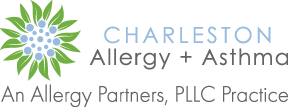If you ask our team of local board-certified allergists, the Lowcountry of South Carolina is a wonder to behold. From the trees that line our cobblestone streets to marshes and coastlines that bring us peace, we are surrounded by beauty. However, seasonal allergy sufferers may find it difficult to enjoy it all; that’s where our Lowcountry Pollen Count can help!
What is a pollen count?
Our Lowcountry Pollen Count is an invaluable tool. With the knowledge and analysis of our dedicated team, this device measures and helps us monitor the pollen levels in the Lowcountry region. It provides up-to-date information on the types and concentrations of pollen present in the air.
Accurate pollen count data is crucial for individuals with allergies. By knowing the pollen levels, allergy sufferers can make informed decisions about outdoor activities, adjust their medication and take preventive measures to minimize exposure and alleviate allergy symptoms.
How does a pollen count work?
Charleston Allergy and Asthma collects daily air samples through a specialized device called a Rotorod, which stands an impressive 30 feet tall just outside our Summerville location.
This Rotorod moves a grease-covered piece called the “Slide” around in the breeze one out of every 10 minutes over a 24-hour period to collect the day’s pollen samples. The slide is replaced each morning before the pollen is dyed and carefully examined under a microscope. Each type of plant pollen has a unique appearance, and slowly but surely, we count how much of each pollen is present in the sample.
We then factor this number to report the pollen-per-liter amount present in the air during the 24 hours. This count is then reported on a scale of one to 12 on our simple-to-understand online pollen count page. Our scale is as follows:
- 0-3 (Low)
- 4-6 (Moderate)
- 7-9 (High)
- 10-12 (Very High)
Aside from the specific count, our team can also determine the main and secondary pollen contributors (i.e., trees, weeds, grass, etc.) and the day’s mold levels. Visit our Pollen Count page to view today’s readings: https://charlestonallergy.com/pollen-count/
Why is Charleston Allergy and Asthma’s count unique?
As the Lowcountry’s trusted choice of allergy relief, Charleston Allergy and Asthma’s award-winning allergy practice is only one of three certified counting stations in South Carolina. This distinction is awarded by the National Allergy Bureau (NAB), a nonprofit affiliated with the Academy of Allergy, Asthma, and Immunology.
Take an active role in your allergy relief!
It’s time to take control of your allergy symptoms! Charleston Allergy and Asthma’s board-certified allergists are ready to support you on the road to allergy relief with allergy testing, personalized treatment plans and immunotherapy treatments. Contact our team to schedule your next allergy appointment.




